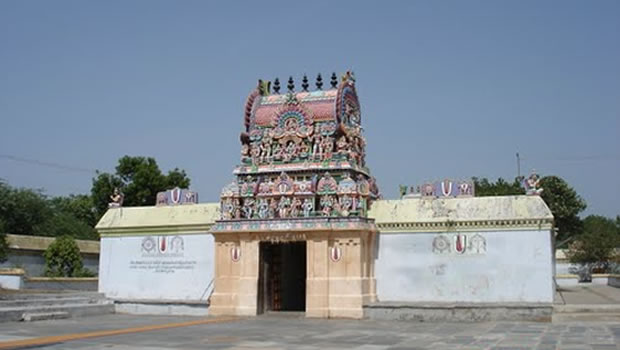Emperumaan Sriman Narayanan showed Prathyaksham for himself. Chakaravarthy Thirumagan, Sri Ramar born as and brought up as an ordinary human being, he met his moola avathaar (Previous avathaar) Parasuramar.
He minimised or reduced the Headweight of Parasuramar and made war with him and finally got his friendship and his blessings.The primary moral of this is if how big and powerful man you may be, we must give respect and should not be trapped inside Maya.
To all of the human beings in the world, our parents are the prime most and the first person to be worshipped. Because of this reason only, Lord ParasuRama, as ordered by his father asked what he wants as "Varam" for killing his mother, he asked for her mother to regain her life.
This shows how dedicated to his father and mother. And in next avathaar, he took his avathaar as Sri Ramar and he respect his father and mother as that of the previous avathaar.Since, he was held in the forest, when King Dasaratha was dead, he could not do the final funeral to his father. But, keeping Jadaayu in his father's place, he did the final funeral to him as what he could have done to his father, King Dasaratha.
When Parasu Raman was against Rama, he showed his actual image (or) face as Parasu Ramar and Sri Ramar are not two different people but they are a single person, the final destiny Sriman Narayanan.
Likewise, after finishing all the final funeral for Jadaayu, when Rama was taking rest, Kiruthra Rajan made Tavam against sriman Narayanan, when Sri Rama along with Sangu and Chakkaram and Bhoomi Pirattiyaar prathyaksham for the king and explained him that he is Sriman Narayanan.
Likewise, he gave prathyaksham for Sri Ramar along with Sangu, Chakkaram and Bhoomi pirattiyaar with 4 (Chathur) bhujam (hand).The final funeral of Jadaayu was done under Punnai tree, when the paramathma gave his dharshan to Rama and Emperumaan gave his dharshan to Thirumangai Mannan. This is one of the said story of this shetram.
The main point to be noticed in this shetram, is only here, Sri Ramar gives his seva as Chakaravarthi (along with Sangu and Chakram).
Sri Valvil Ramar Perumal temple is among the 108 divaydesam of Sri Vaishnavas and comes under the choza naadu group of temples. Moolavar is Lord Valvil Ramar in reclining posture.
Goddess Sita does not appear along with the Lord as it depicts the period when Sita was separated by Ravana from the Lord. There are 2 prakarams in the temple. Just 2 kms from the temple is Mandangudi, the birth place of Thondaradipadi Azhwar/Alwar.
Lord Rama in the temple is found with four hands (chaturbhujam) with Shangu Chakra and Bhooma devi near the feet of the Lord. This is unique as in no other divyadesam, Lord Rama is present in this form. The Yoga Narasimhar here is popular as Udyoga narasimhar as it is believed that worshipping Narasimhar here would bring about good employment prospects.
Sri Ramapiran, who is opularly called as "Chakaravarthy Thirumagan", is doing all the final funeral for "Jadaayu", which the Eagle bird. After finishing his activity, he is taking rest due to the work done for the final ceremony of Jadaayu.
This is Kolam the God shows his thirukkolam to the world.Valvil Raman, who is the Emperumaan of this sthalam, after Sitapirattiyar his wife is lost, he is holding only his Kothandam, the Bow. This is the only support he has inspite of loosing his wife.
But, Bhoomi Pirattiyyar, who helped Rama in the final funeral in Thiruputtkuzhi is giving support here and is sitting along with Valvil Ramar.Since, the Lord does the final ceremony for Jadaayu, the Eagle belongs to the pull family (One king of bird family) and after finishing the ceremony, he takes rest.
So this shetram is called as "Pullam Kudi". Kudi means the place of staying in Tamil.Kiruthrajan, when doing tapas keeping Emperumaan in his heart and mind, Valvil Raman arised in front of him in Bujangha Sayanam. Since, the Theertham which purified Kiruthrarajan, the theertham here is called "Kiruthra theertham".
The temple is open from 7.30 am to 12.30 in the mornings and from 4 pm to 7.30 pm in the evenings.
Do:
- Do pray your Ishta Devata before pilgrimage to Temple.
- Do contact Temple Devasthanam information centre for enquiry, temple information and for Pooja details etc.
- Do reserve your travel and accommodation at Temple well in advance.
- Do bath and wear clean clothes before you enter the temple.
- Do concentrate on God and Goddess inside the temple.
- Do maintain silence and recite your Istamantram to yourself inside the temple.
- Do observe ancient custom and traditions while in Temple.
- Do respect religious sentiments at Temple.
- Do deposit your offerings in the hundi only.
Don't s:
- Do not come to Temple for any purpose other than worshipping of God and Goddess.
- Do not smoke at Temple.Do not consume alcoholic drinks at Temple.
- Do not eat non-vegetarian food in the Kshetram.
- Do not approach mediators for quick Darshanam. It may cause inconvenient to others.
- Do not carry any weapon inside the temple.
- Do not wear any head guards like helmets, caps, turbans and hats inside the temple premises.
- Do not perform Sastanga Pranama inside the Sanctum Sanctorum.
- Do not take much time while performing Sparsa Darshanam to God in Garbhagriha.
- Do not buy spurious prasadams from street vendors.
- Do not encourage beggars at Temple.
- Do not spit or create nuisance in the premises of the temple.
